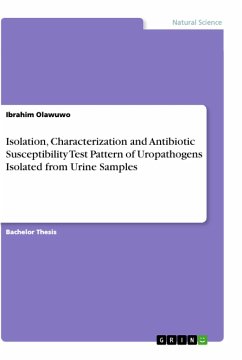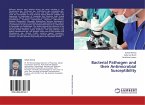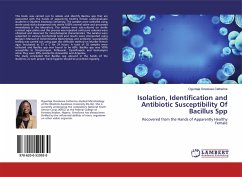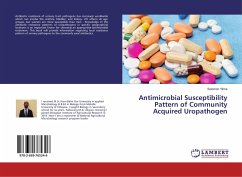Bachelor Thesis from the year 2016 in the subject Biology - Micro- and Molecular Biology, grade: 2.2, Kwara State University (INSTITUTE OF APPLIED SCIENCE), course: MICROBIOLOGY, language: English, abstract: Uropathogens such as E. coli is responsible for approximately 85% of community acquired infection, besides Proteus, Klebsiella and Pseudomonas. This pathogens cause varieties of urinary tract infection in both male and females. The effect of uropathogen on an individual or community at large cannot be over emphasized as it constitutes majorly to the urinary tract infections and is often referred to as community acquired infections. Some of these uropathogens are found to be susceptible while some are resistant. Therefore, the need to study its susceptibility pattern is very significant. The aim of this study is to characterize how the susceptibility pattern uropathogens are isolated from urine samples. The specific objectives of this study are: to determine the prevalence of bacteria uropathogens isolated from outpatient with complaints of UTI; to determine the susceptibility patterns of the isolates of uropathogens to the common used antibiotics; to identify the association of UTI with possible risk factors. Urinary tract infection (UTI) is a term applied to a variety of clinical conditions ranging in severity from asymptomatic which is carrier status in the urine to symptomatic acute infection of the kidney with resultant sepsis. UTI is defined also as the growth of a known bacterial pathogen of more than 103cfu/ml in association with a positive dipstick or urinalysis. It is usually classified by the infection site: an infection of the lower urinary tract, urethra (urethritis) and urinary bladder (cystitis); an infection of the upper urinary tract, ureter and kidneys (pyelonephritis); and an infection of the renal pelvis (pyelitis). Urinary tract infections also divided into complicated and uncomplicated infections. UTIs that occur in a normal genitourinary tract with no prior instrumentation are considered as uncomplicated. A patient is diagnosed with uncomplicated cystitis if his or her midstream urine specimen has between 103 to 105 colony forming units (cfu)/ml. the clinical symptoms of UTI usually include frequency, dysuria, pyuria, suprapubic tenderness, back pain, fever and urgency.
Hinweis: Dieser Artikel kann nur an eine deutsche Lieferadresse ausgeliefert werden.
Hinweis: Dieser Artikel kann nur an eine deutsche Lieferadresse ausgeliefert werden.








